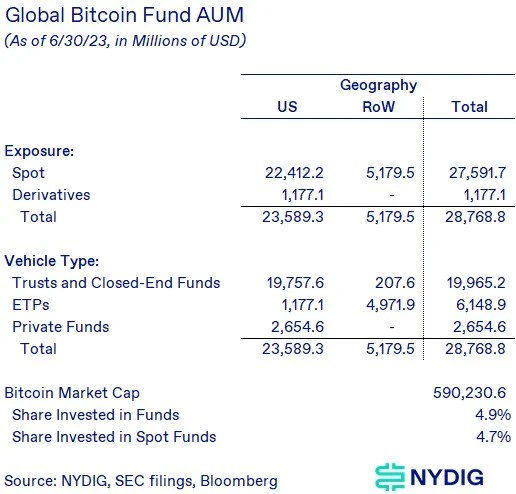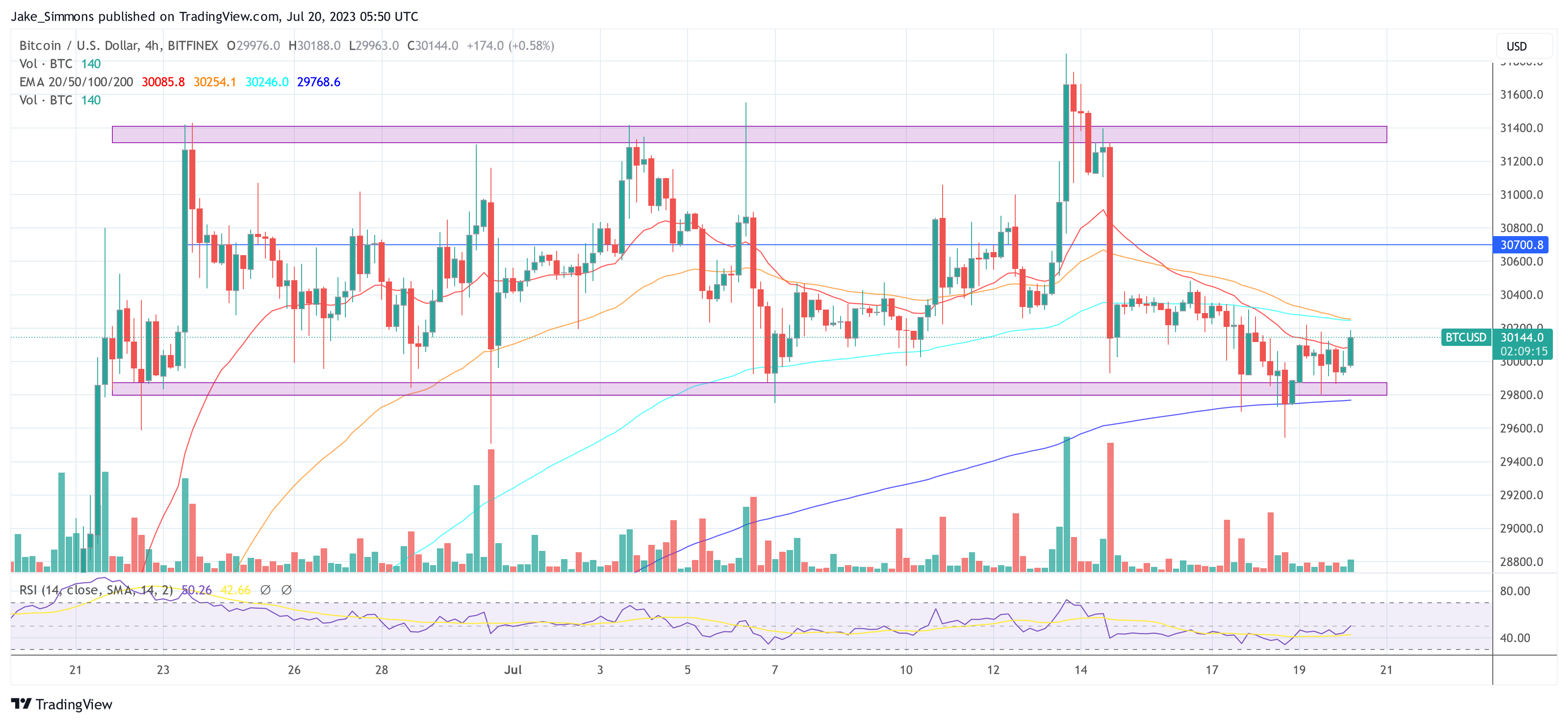Latest news about Bitcoin and all cryptocurrencies. Your daily crypto news habit.
In a research report, NYDIG’s Global Head of Research, Greg Cipolaro, delved into the highly anticipated spot Bitcoin ETF and its potential impact on the BTC price. Cipolaro examines the opportunity it presents, its implications for the investment community, and the potential demand it could unleash. The analysis also sheds light on the existing landscape of BTC funds, the comparisons to gold, and the potential scenarios that could unfold if a spot Bitcoin ETF were to materialize.
Before examining the potential impact of a spot ETF, it is crucial to grasp the current state of Bitcoin investments. While the US has not yet witnessed a spot ETF, existing structures, including trusts like the Grayscale Bitcoin Trust (GBTC), futures-based ETFs, spot-based ETFs outside the US, and private funds, have amassed a staggering $28.8 billion in assets under management (AUM).
Notably, $27.6 billion of this AUM is invested in spot products. Cipolaro emphasizes that despite this substantial investment, existing options have drawbacks that a spot ETF could overcome.
The Bullish Argument For A Spot ETF
The bullish case for a spot ETF centers around the numerous benefits it could offer compared to existing alternatives. Investors stand to gain from the enhanced investor protections associated with exchange-traded products, the brand recognition and familiarity of BlackRock and iShares, as well as improved liquidity, lower tracking error, and potentially lower costs compared to certain existing funds. Cipolaro points out that while the exact fees for a spot ETF remain undisclosed, it holds the potential for substantial demand.
In the quest to estimate the size of potential demand for a spot Bitcoin ETF, Cipolaro turns to gold for analogies. Gold ETFs currently hold over $210 billion in AUM worldwide, whereas nearly half of that AUM ($107.3 billion) is in North America.
Remarkably, global ETFs only hold 1.6% of the total gold supply, with central banks (17.1%), bars and coins (20.6%), jewelry (45.8%), and others (14.9%) accounting for much bigger portions. However, BTC’s supply is already more heavily held in various fund formats (4.9%) compared to gold (1.6%).
When looking at private investments, the ratio is more favorable. The share of private investment in gold ETFs is 7.4% compared to 4.9% for various Bitcoin funds. Private investment in gold is still primarily held in coins and bars (92.6% of private investment). Cipolaro highlights:
The numbers are striking on an absolute dollar basis – over $210B invested in gold funds, while only $28.8B is invested in Bitcoin funds.
Considering Bitcoin’s higher volatility compared to gold, Cipolaro uses a volatility equivalent basis to estimate potential demand for a spot Bitcoin ETF. Bitcoin is about 3.6x more volatile than gold, meaning that on a volatility equivalent basis, investors would require 3.6x less Bitcoin than gold on a dollar basis to get as much risk exposure. “Still, that would result in nearly $30B of incremental demand for a Bitcoin ETF.”
Impact On BTC Price
The analysis also explores potential scenarios of a spot ETF’s impact on Bitcoin’s price. Assuming a 10.0x money multiplier (11.36x was observed in 2018), “for every $1 of AUM that flows into an ETF it impacts the value (market cap) of BTC by $10, assumes Cipolaro, concluding:
On the lower end, $1B of ETF AUM would be on par with the existing futures-based BITO ETF. On the upper end, $100B would surpass the combined $85B in AUM in GLD and IAU. While we do not know the ultimate success of a spot Bitcoin ETF, these seem like helpful ways to bound the analysis.
At press time, the BTC price stood at $30,144, remaining near the range range lows.
Disclaimer
The views and opinions expressed in this article are solely those of the authors and do not reflect the views of Bitcoin Insider. Every investment and trading move involves risk - this is especially true for cryptocurrencies given their volatility. We strongly advise our readers to conduct their own research when making a decision.


